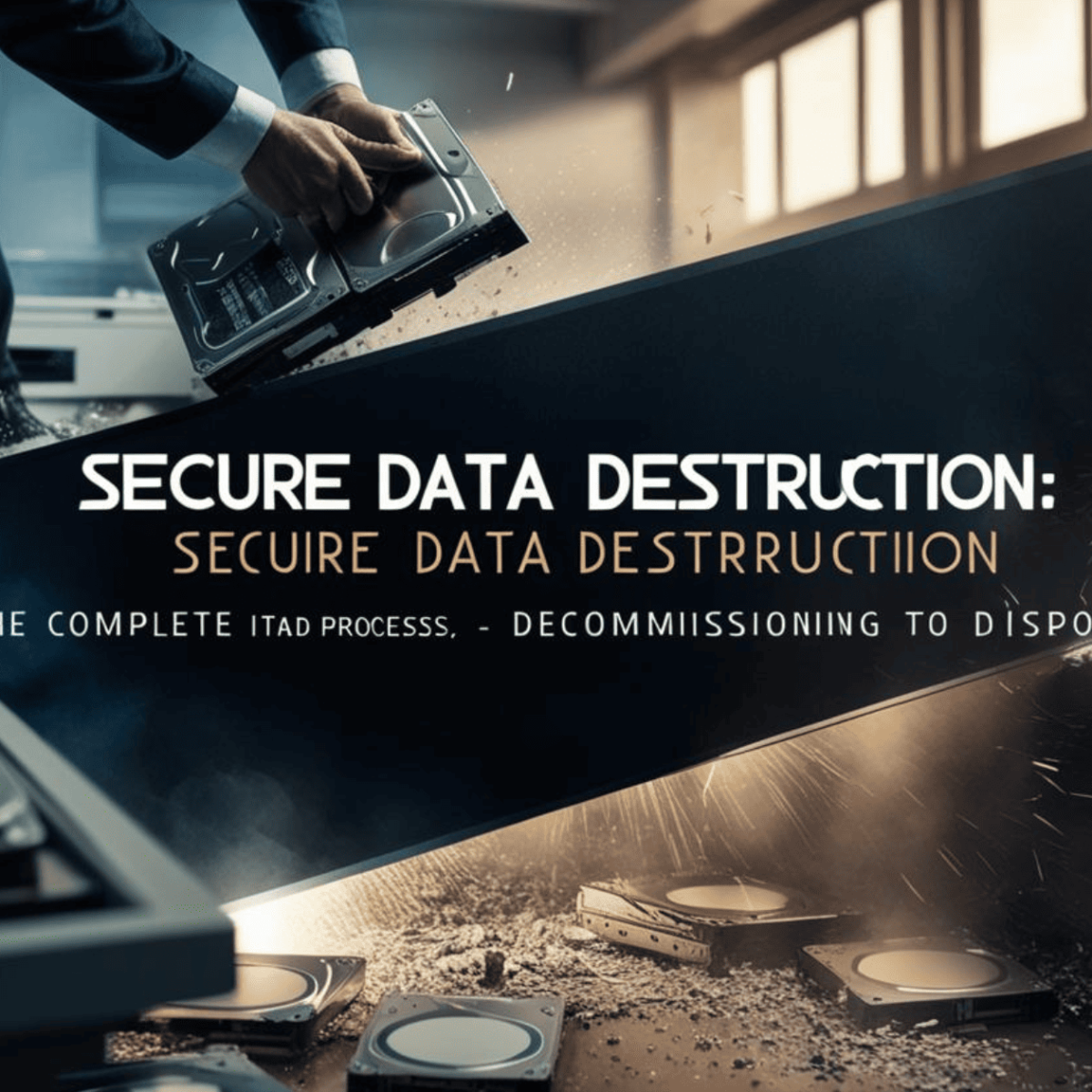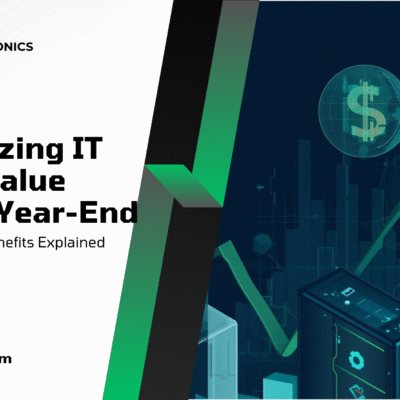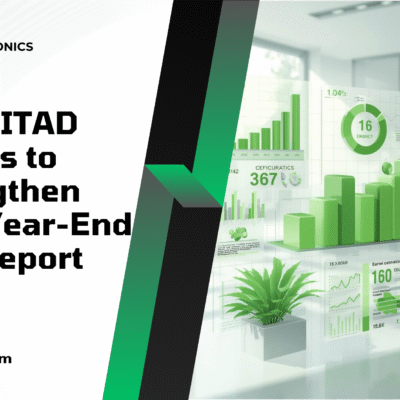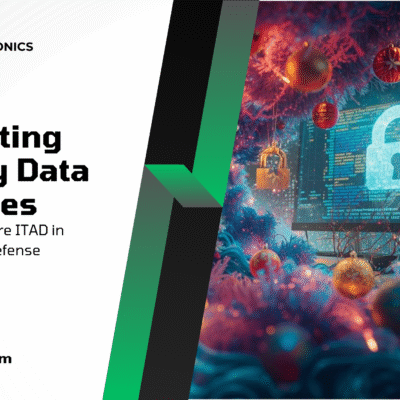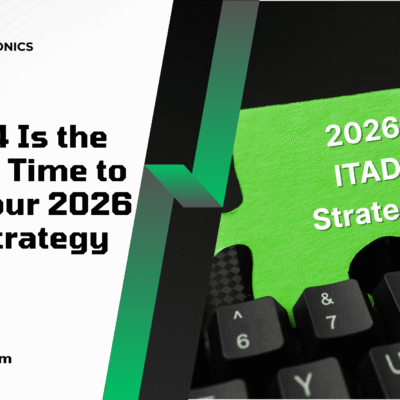Introduction
As businesses upgrade their IT infrastructure, they face the challenge of disposing of outdated technology securely and responsibly. Improper disposal of IT assets can lead to data breaches, regulatory fines, and environmental harm. To avoid these risks, companies must adopt efficient, compliant, and eco-friendly IT asset disposal practices.
A well-structured IT Asset Disposition (ITAD) strategy ensures that retired IT equipment is properly decommissioned, securely wiped, and sustainably recycled. In this guide, we’ll explore the best practices for IT asset disposal that prioritize efficiency, compliance, and environmental responsibility.
Understanding IT Asset Disposal for Businesses
IT asset disposal (ITAD) refers to the safe and responsible decommissioning of IT equipment. It goes beyond simply getting rid of old devices—businesses must ensure that IT assets are disposed of in a way that:
- Protects sensitive data through certified data destruction methods.
- Meets industry regulations to avoid non-compliance penalties.
- Minimizes environmental impact through responsible e-waste recycling.
📌 Related: How Customized ITAD Solutions Can Improve Your Business’s Data Security
1. Ensuring Secure and Compliant Data Destruction
One of the biggest risks in IT asset disposal is data leakage. Even after deletion, data remains on hard drives and storage devices unless properly sanitized. Businesses must use certified data destruction methods to eliminate security risks.
Key Data Destruction Methods:
- Data Wiping – Overwrites storage devices using industry-approved software.
- Degaussing – Uses powerful magnets to scramble stored data beyond recovery.
- Physical Destruction – Hard drives and SSDs are crushed or shredded.
To ensure compliance, businesses should work with certified ITAD providers that follow:
- NIST 800-88 Guidelines for media sanitization.
- DoD 5220.22-M standards for data overwriting.
- HIPAA, GDPR, and SOX regulations for data privacy and security.
📌 Related: Understanding R2 Certification: What It Means for Your Business
2. Achieving Compliance with ITAD Regulations
IT asset disposal is subject to strict regulatory requirements designed to protect businesses, consumers, and the environment. A compliant ITAD strategy ensures that organizations meet local, federal, and industry-specific mandates.
Key ITAD Compliance Standards:
- HIPAA (Health Insurance Portability and Accountability Act) – Requires secure disposal of patient data in the healthcare sector.
- GDPR (General Data Protection Regulation) – Enforces strict data privacy measures for businesses handling EU customer data.
- SOX (Sarbanes-Oxley Act) – Mandates proper disposal of financial records for corporate accountability.
- R2 Certification – Ensures ethical and sustainable electronics recycling.
By partnering with an R2-certified ITAD vendor, businesses can ensure their IT disposal process is fully compliant with regulatory requirements.
📌 Backlink: SERI’s Official R2 Certification Guide
3. Implementing Eco-Friendly IT Asset Disposal Practices
The growing concern over e-waste pollution has made sustainable IT disposal a top priority for businesses. Many IT components contain hazardous materials such as lead, mercury, and cadmium. If improperly discarded, these materials can contaminate soil and water sources.
Best Practices for Eco-Friendly ITAD:
- Refurbish & Resell – Extend the life of IT equipment by reselling or donating reusable devices.
- Certified E-Waste Recycling – Work with ITAD vendors who follow EPA-approved recycling methods.
- Zero-Landfill Policy – Ensure that non-reusable materials are properly processed through certified recycling programs.
By choosing sustainable IT asset disposal practices, businesses can reduce their carbon footprint while complying with environmental regulations.
📌 Backlink: EPA Electronics Recycling Regulations
4. Maximizing Value Recovery from Retired IT Assets
IT asset disposition is not just about getting rid of old devices—it can also be an opportunity to recover value from retired IT assets. Many decommissioned devices still hold resale value, allowing businesses to offset IT upgrade costs.
Options for IT Asset Value Recovery:
- IT Asset Buyback Programs – Receive compensation for used equipment.
- Revenue-Sharing Models – Earn a percentage of resale profits from refurbished IT assets.
- Component Harvesting – Extract valuable materials (gold, silver, copper) for reuse.
An R2-certified ITAD provider can assess IT assets and help businesses maximize financial returns while maintaining compliance.
📌 Related: How ITAD Services Can Improve Your Company’s Bottom Line
5. Choosing the Right ITAD Partner
Not all ITAD vendors follow best practices for security, compliance, and sustainability. To ensure a smooth and risk-free IT disposal process, businesses should partner with certified and reputable ITAD providers.
Key Considerations for Selecting an ITAD Vendor:
- Certifications – Ensure the vendor is R2-certified and follows industry standards.
- Transparent Reporting – Look for providers that offer real-time asset tracking and Certificates of Data Destruction.
- Secure Logistics – Choose vendors with chain-of-custody protocols for IT asset transportation.
By partnering with a trusted ITAD provider, businesses can protect their data, meet regulatory standards, and contribute to environmental sustainability.
📌 Related: How to Choose an ITAD Vendor You Can Trust
Conclusion: IT Asset Disposal Done Right
An efficient, compliant, and eco-friendly IT asset disposal strategy is essential for business security, legal compliance, and environmental sustainability. By following best practices and working with certified ITAD vendors, businesses can:
- Prevent data breaches with certified data destruction.
- Stay compliant with HIPAA, GDPR, and environmental regulations.
- Reduce e-waste through responsible recycling and refurbishment.
- Maximize ROI by recovering value from retired IT assets.
At IER ITAD Electronics Recycling, our Colorado Springs facility, specialize in secure, compliant, and environmentally responsible IT asset disposition. Contact us today to learn how we can help your business implement an efficient ITAD strategy here in Colorado.

